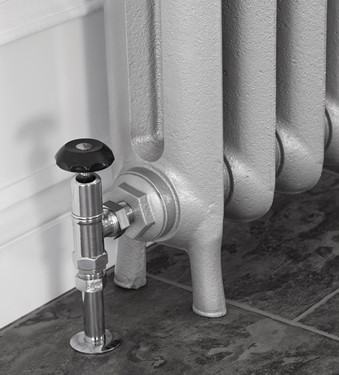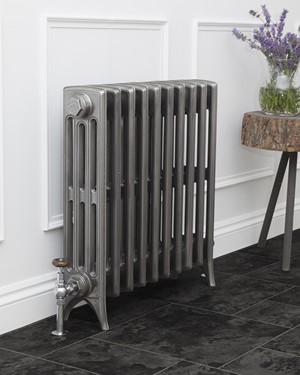Posted: Tuesday, July 28, 2020
 When your radiators are working fine, you can take it for granted that your home will be cosy and warm when it’s cold outside!
When your radiators are working fine, you can take it for granted that your home will be cosy and warm when it’s cold outside!
But, when you find your radiators just aren’t working as you expect them to, it can be a real nuisance. Whether it’s a cool patch, a certain problem radiator or you’re not getting any heat out of them at all, getting to the bottom of the reasons why your radiators are cold sometimes feels like a mystery.
So, what should you do if you discover you have a cold radiator?
Well, there are a few different reasons why that might be the case. To help you out, we’ve answered some of the most common concerns and how to fix them...
Generally, radiators are pretty reliable things. But, as they are just one part of a larger central heating system, there are a few factors that can affect how well they heat up.
So, before you go any further, make sure you check the basics!
Double-check that…
Remember, if you think your boiler is faulty, always get a Gas Safe engineer to fix it.
Or, if your radiators are still cold, read on to find out why that might be.
Do you have a radiator that was once functioning fine, but is now feeling cold at the top while the bottom is still nice and warm?
It sounds like your radiator needs bleeding.
This is one of the most common issues when it comes to cold radiators! It happens when air gets trapped inside your radiator. These bubbles rise to the top, stopping the hot water from being able to fully circulate your radiator.
The good news is that this is also one of the easiest things to fix if you know for sure that this is the issue. To check, turn your central heating on and adjust your radiator valves to their maximum heat setting. If you can feel them getting hot at the bottom but the top half is staying cold, that’s a sign they need bleeding. You might also hear a gurgling noise coming from them.
Take a look at our guide on how to bleed a radiator to easily fix this issue yourself.
Perhaps you have the reverse of the problem above and it is the bottom of your radiator that’s cold, while the top is heating up fine.
In this case, bleeding your radiator isn’t the solution as it won’t be trapped air that’s causing the problem. Instead, it is likely to be a build-up of ‘radiator sludge’.
It might sound unpleasant, but sludge in your radiator and central heating system is a common occurrence. The combination of water and metal often results in limescale and rust which can build up over time. If it gets really bad, it can settle at the bottom of your radiator and cause a blockage. This stops the hot water from being able to circulate, creating cold patches at the bottom of your radiator.
You can help protect your radiator from a build-up of sludge by using a radiator inhibitor regularly. This is a chemical that you pour into your central heating system to help break down sludge and prevent a blockage from occurring.
However, if you already have a blockage on your hands, a bottle of inhibitor probably won't be enough. If you are certain which radiator is causing the problem, you can try removing the sludge yourself. To do this, try the following steps:
For more help on how to remove a radiator, our guide to replacing a radiator has a step-by-step guide.
If you still think you have a blockage - or you don’t want to flush your radiator yourself - you can call up an engineer for a professional power flush service instead.
If you have just bought a lovely new radiator and you’re still finding it is cold at the bottom, you might be worried that you’ve just wasted your money.
So long as you have already checked that the valves are fully open and the boiler is at the right pressure, it could be that a blockage in a different radiator or elsewhere in the system is stopping the hot water from reaching your new one.
In this case, it might be best to ask a plumber to come and investigate to find out exactly what is going on.
There are two main reasons why your radiators could be hot upstairs but cold downstairs:
When there is a problem with the central heating system, you will often find that the upstairs continues to get heat while downstairs stays cold. This is because heat rises, so any warmth that is produced will find its way upstairs eventually.
First of all, check your central heating pump is working before you go to the effort of balancing your radiator. It should be warm and vibrating slightly.
If you think the pump is working fine, you could try balancing your radiators to see if that makes a difference. But, it might be easier to call a plumber out to get straight to the root of the cause.
Have you tried all of the above but one of your radiators is still completely cold?
It could be that one of the valves is stuck. Locate your thermostatic radiator valve (TRV) at the end of your radiator, and remove the head. Underneath it, you should see a raised pin. You should be able to press the pin down and see it spring straight back up. If it is stuck down, see if you can wiggle it free with some pliers or grease.
If you can’t get the pin up, or your radiator is still cold, it’s time to finally call the professionals in!
